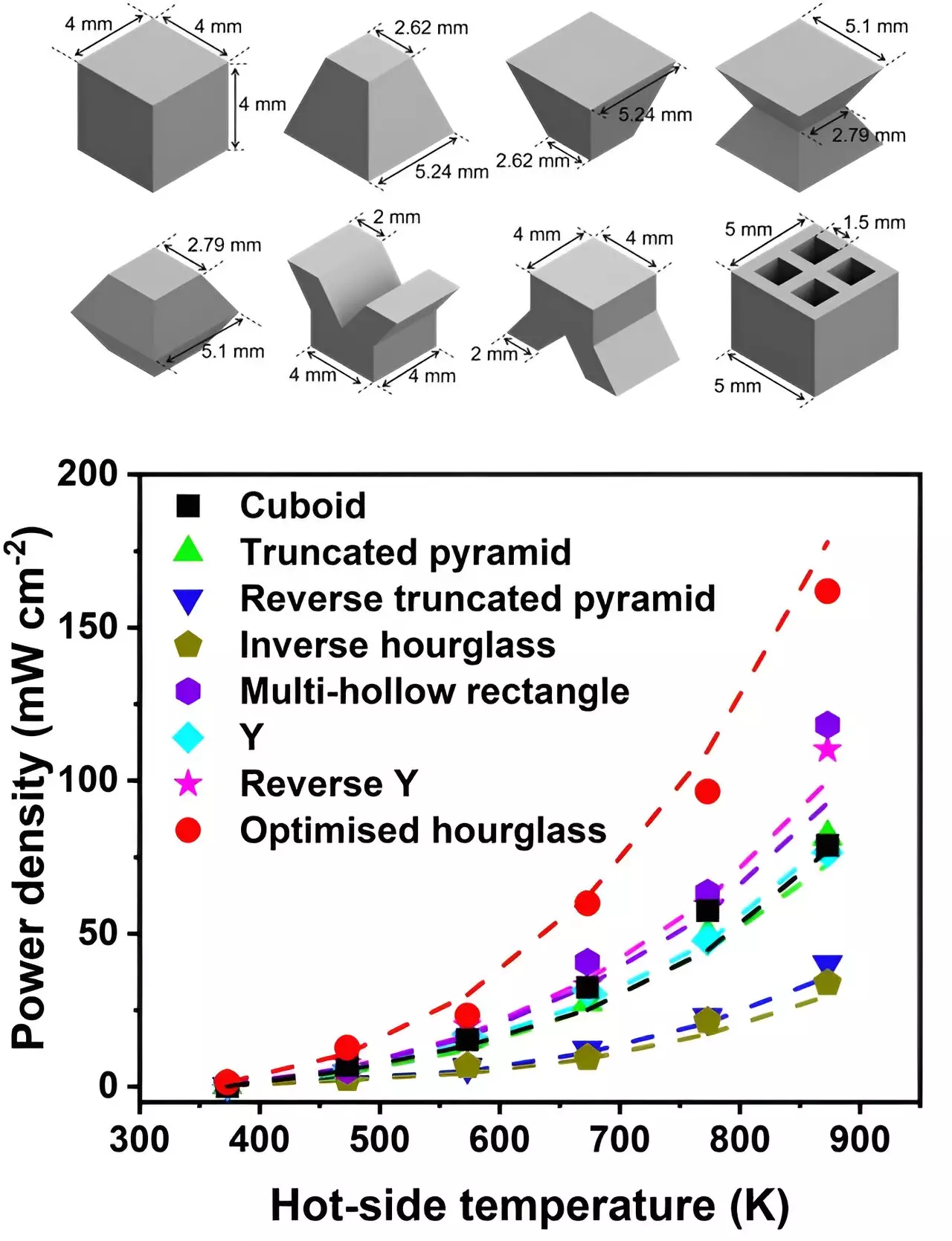In recent years, there has been a global push towards developing new technologies that harness renewable energy sources for generating electricity. This includes photovoltaics, wind turbines, and hydro-power generators. However, an alternative solution to mitigating the impact of climate change lies in converting excess or waste heat into electricity. This approach, known as thermoelectric power generation, relies on using materials with valuable thermoelectric properties. When these materials are exposed to high temperatures on one side and colder temperatures on the other, electrons flow from the hot side to the cooler one, generating electrical potential.
While promising thermoelectric materials have been identified, the performance of thermoelectric modules remains unsatisfactory due to the challenges associated with designing and fabricating optimum module structures. This limitation restricts their real-world integration potential. Researchers have been exploring new strategies to address these challenges and improve thermoelectric materials for high-power generation.
Researchers at Pohang University of Science and Technology and the George Washington University have introduced a new strategy for designing thermoelectric materials based on copper selenide (Cu2Se). This strategy aims to create materials for high-power generation using techniques that are easier to reproduce on a large scale. The design involves non-cuboid three-dimensional (3D) geometries, which offer additional control over thermal and electrical transport, potentially enhancing device performance.
The research team led by Prof. Saniya LeBlanc at the George Washington University has been exploring the influence of non-cuboid geometries on the performance of thermoelectric power generators. Through a series of simulations and experimental assessments, they have demonstrated the impact of 3D geometries on power generation. By using 3D printing techniques, they were able to fabricate complex geometric designs of materials like Cu2Se and evaluate their power generation performances.
The Results of the Study
Experiments conducted by the research team reveal that certain non-cubic legs, particularly those with an hourglass-shaped geometry, achieve the highest power generation in terms of output power and efficiency. The controlled liquid-phase sintering technique employed in the fabrication process allowed for defect formation that reduced thermal conductivity and improved ZT values up to 2.0, showcasing the potential of 3D geometries in enhancing thermoelectric performance.
The Future of Thermoelectric Power Generation
The study by Prof. Saniya LeBlanc and his colleagues emphasizes the significant impact of 3D geometry on thermoelectric power generation. While Cu2Se-based materials were used in this research, the findings have implications for other types of thermoelectric materials as well. By applying non-cuboid geometries to different systems, researchers can potentially boost the performance of thermoelectric power generators without altering their intrinsic properties. Future studies will explore the application of non-cuboid geometries in segmented devices and Peltier cooling modules, paving the way for further advancements in thermoelectric technology.


Leave a Reply